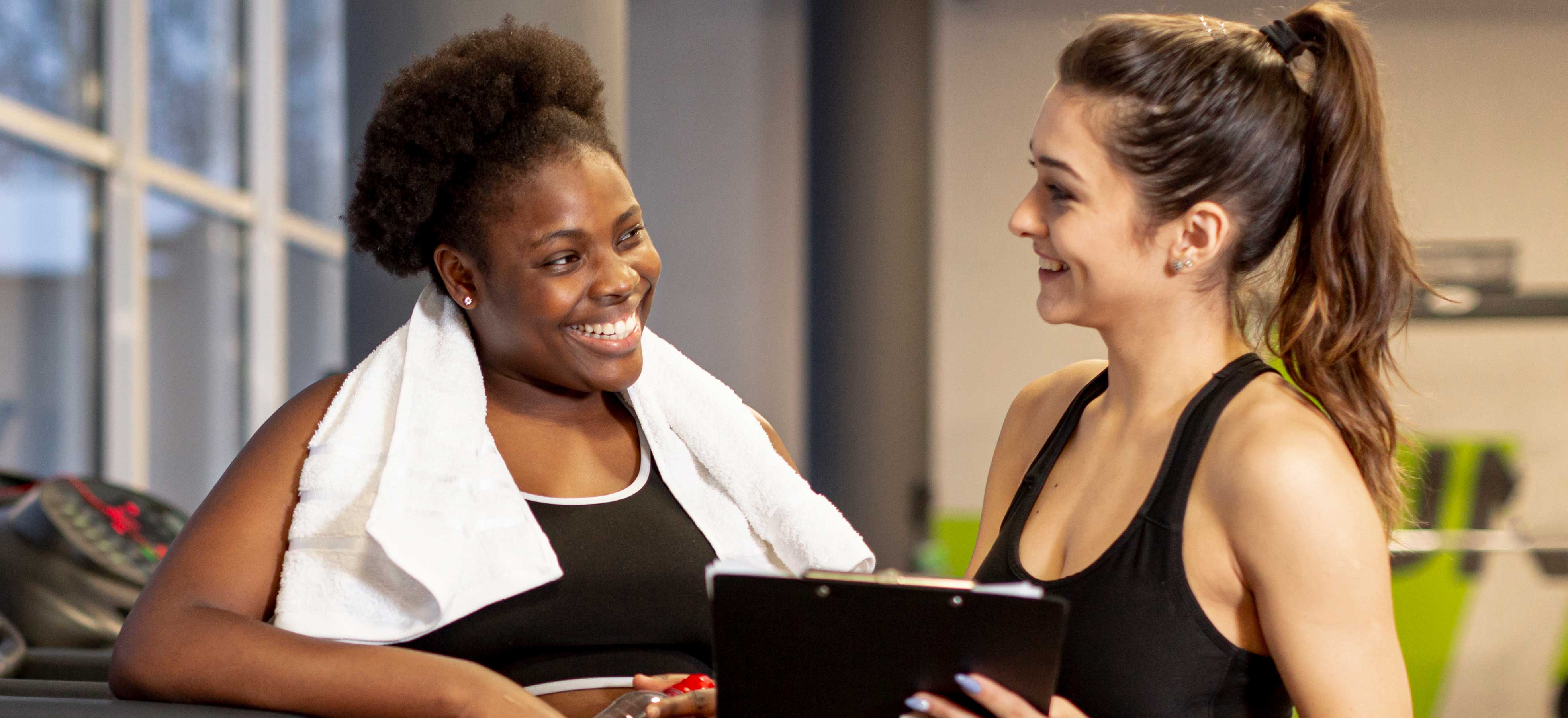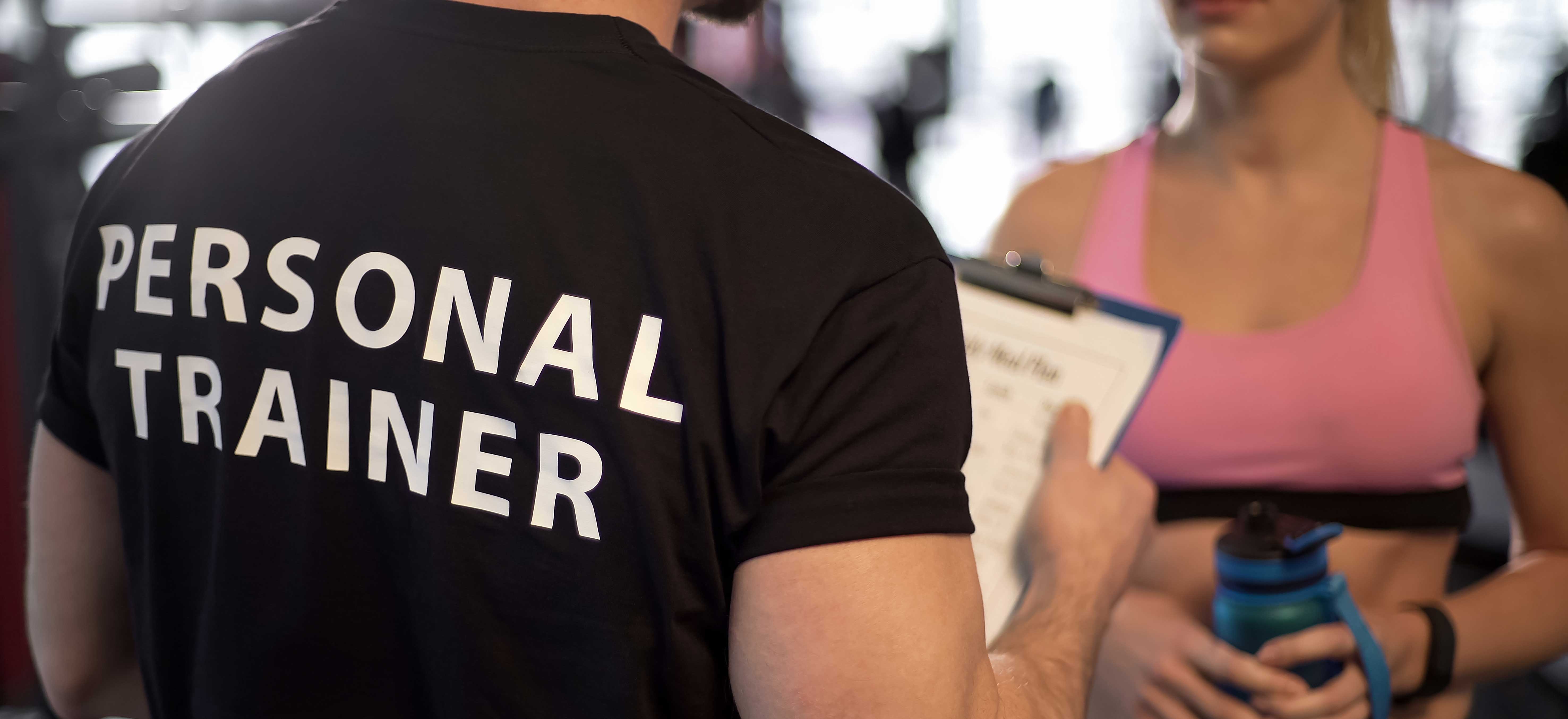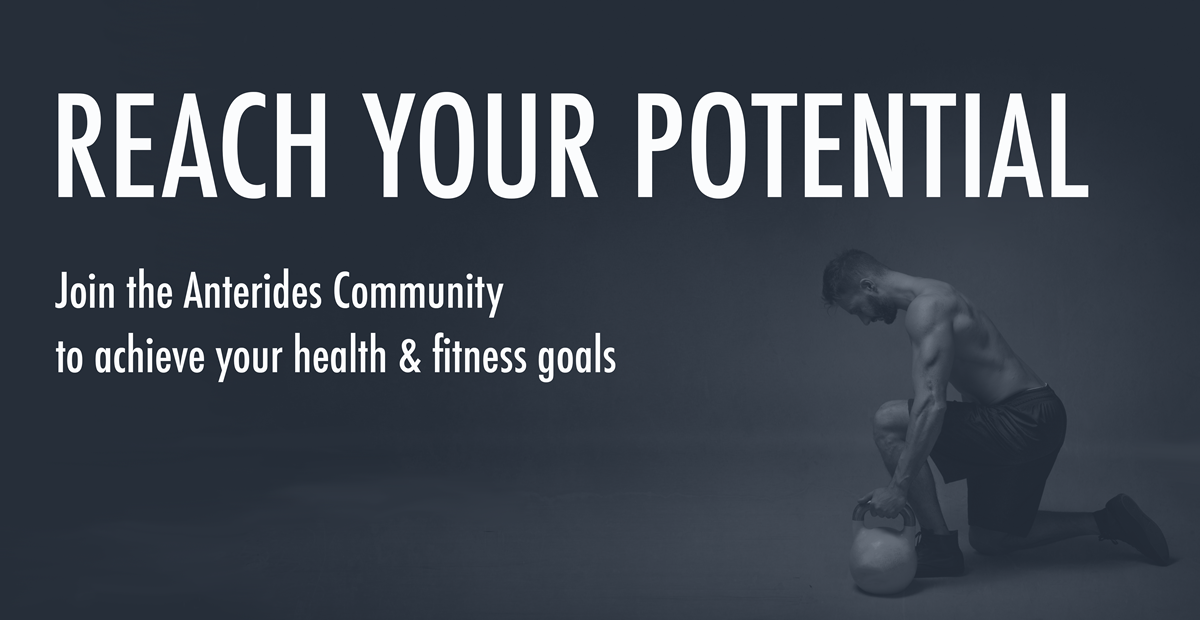6 TIPS ON PREPARING FOR CLIENT CONSULTATIONS
Posted: 21/12/2020 by Steven Lokwan Ph.D.

Securing a new client is always exciting; it signifies that your skills, as a fitness professional, are being recognized, especially if you’ve been approached because of a referral or from direct observation of your impressive training prowess with other clients. Furthermore, it also provides a perfect opportunity to hone your rapport-building skills!
Whilst, initial consultations can be daunting, especially if you’re just starting out, there are a few things you can do to ensure you feel both energized and confident to help cement your client-trainer relationship.
1. FIRST IMPRESSIONS LAST
Remember you are working in a service industry, so like it or not the fact is you are going to be judged in the first few seconds of introducing yourself to your client. Therefore, it is important to make an immediate good impression:
- Appearance - make sure you look the part. Of course, you need to appear clean and tidy but your appearance is more than just putting on a clean shirt and taking a shower. Appearance also includes less obvious details which, to name but a few, include body language, whether you’re ladened with unnecessary paraphernalia and whether you’re giving your undivided attention.
- Timekeeping – arrive on time, or ideally a few minutes before to check the consultation venue is set up appropriately.
- Attitude – whilst arrogance is just plain ugly, a certain degree of self-assurance is required. Remember, your new client has sought your help and will be looking for reassurance that you know your stuff and can help them reach their goals. It is also important to convey a sense of togetherness; you’ll be working closely with each other for some time, and their success should be your success, so remember to emphasize that you’re a team from the onset.
- The setting – avoid immediately diving into the consultation; first, ensure your client is comfortable, address any immediate concerns they have to put them at ease, and explain what your consultation will involve. Once you begin, remember to remain calm and avoid making things feel like an interrogation by including some ‘non-training pleasantries’ into your conversation.
2. GET TO KNOW YOUR CLIENT
Whilst the main function of your consultation is to get to know your client this doesn’t mean you should just stick to finding out what their goals are; instead, you should also try to find out what makes them tick! With this in mind, your consultation not only needs to determine what your client wants to accomplish but also what is their underlying motivation for coming to you in the first place. Of course, there are a multitude of other pieces of information you can, and probably should, garner from your consultation, but if you don’t determine at least these two pieces of information you will need to continue the consultation until you do. To facilitate this consider the following:
- Be prepared – never ‘wing it’, read your client’s details prior to the meeting, and refer to them during your discussion.
- Be thorough with your questioning – ask questions in a manner that your client understands, otherwise, at best you’ll only get a partial answer, and at worst you’ll get a wrong answer. Avoid taking answers at face value, and instead consider whether they fall within the parameters of what you expect, or whether you’ve just been thrown a curveball. If things sound outlandish, explore further by asking additional questions to clarify. To achieve this, use both open-ended and closed-ended questions; the former will provide your client with an opportunity to elaborate further, whilst the latter should only allow for ‘yes’ or ‘no’ answers to help pin things down.
- Listen with both active and passive intent – your consultation will require engagement from both you and your client. At the start of the consultation, you will probably actively listen to your client where you concentrate on what your client says and engage with them to understand, respond, and remember discussion points. However, as the consultation progresses you may find a passive listening approach is also required where you allow them to speak without interruption as they open up to you and describe their situation to you.
- Make detailed records – you are unlikely to remember every detail discussed; therefore, it is essential that you take sufficient notes. However, remember to let your client know that you will be taking notes to help you build their training program to avoid them wondering what you’re writing down. Conversely, avoid making needless or excessive notes, as this can create awkward silences which can make your client nervous. If you find it difficult to write sufficient notes, consider recording your meeting; though do ask for your client’s permission first. After the consultation has finished, review your notes – it will be harder to decipher things later when things aren’t as fresh in your mind!
3. PRACTICE, PRACTICE, PRACTICE!
Feeling some trepidation about consultations is a natural part of the course. However, it is important to remember that your client will be seeking assurance from you that you are right for them, so it’s important to keep your insecurities in check and believe in your abilities. Practice your consultations with as many different people as possible to test how your approach fairs with different personalities and consider the following:
- Do things flow, or does the conversation feel stunted?
- Do you retain your rehearsal-client’s attention, or do they appear distracted or bored?
- Do they understand your line of questioning, or do they often require clarification before answering?
- Did you complete the rehearsal-consultation in good time, or was it shorter/longer than expected?
Clearly, the more you practice the easier your consultations will become; however, avoid complacency as you can never be too prepared. Remember, you’re dealing with people, not robots, who will bring a myriad of issues with them. It’s impossible to prepare for every eventuality, and so a little bit of trepidation is a good thing as it will keep you on your toes and help to ensure that you give a high level of personalized care and attention to each and every client.
4. BE PREPARED
By now you should appreciate that it is essential to prepare for every consultation with the same due diligence as the very first one you ever ran. However, what does this really mean? Of course, you need to prepare yourself, but it’s just as important to ensure that your new client does too, otherwise there is a high chance that neither of you will get what you need from the meeting, so consider the following:
- Remind your client - about a day or two before the consultation send a reminder that includes the time, date, and venue as well as a brief description of its purpose. It is also good practice to ask them to think about any topics they want to bring up and discuss during the consultation.
- Prepare a checklist for yourself – no matter how many consultations you do, no two will ever be the same even though broadly speaking they will cover similar ground. You may find that you are drawn off-topic or lose your train of thought, and so it is useful to have a checklist of topics that need to be cover to hand to make sure you don’t forget them.
- Explain the process to your client – at the start of your consultation show the checklist to your client, and as it progresses explain the reasoning behind your questions and physical assessment so they have a better understanding of the process. Remember to pitch your explanations at the right level; a consultation is not an opportunity for you to bamboozle your client with technical jargon or show off. Instead, your explanations need to be clear, concise, and to the point so that your client feels part of the process without being made to feel stupid or bored as you ramble on.
5. HONESTY
As your consultation proceeds, both you and your client should start to feel a sense of purpose. However, this in itself may not be enough for success, and as a responsible fitness professional, it is important to be honest in terms of whether you think you can help your client reach their goal. This is not to say that every self-doubt you have should raise a red flag, but if you really do not feel you can get your client to their end goal you need to be honest with them from the onset, and consider referring them to a colleague who is better able to help them. Whilst this may seem at odds with building your client-base, in the long term this approach will pay dividends because you will avoid wasting your time with clients who will quit your program early on as they realize that things aren’t working out. When making your decision, consider the following:
- Special populations – training certain individuals requires additional professional qualifications and experience. If you do not have these you should not train them, irrespective of how much you ‘think’ you can.
- Your ability to accommodate your client – some client’s will be a dream train, they turn up on time, they pay on time and they always give 100%. Conversely, other clients need a little (or a lot) more support to the degree where you spend more time coaxing, motivating, and reminding them to turn up than actually training them. Whilst everyone has one or two of these clients, it will become increasingly difficult to manage your client base, let alone your sanity and patience, if you acquire too many of them at once.
- Your client’s personality – your professional skill may not be the deciding factor, it may come down to something as simple as a personality clash.
6. CONFIDENTIALITY
So you’ve reached the end of a successful consultation, secured your client and both of you are fired up to get started – what more could you ask? Well, on the face of it probably not a lot, but don’t get too carried away. Whilst your enthusiasm might mean that it’s tempting to share your triumphs with a new client with your colleagues, friends, or loved ones, avoid it at all cost. Remember, your client has entrusted you with their personal details, and so by sharing you betray their trust.
It’s also important that you securely store your records, back them up, back them up, and BACK THEM UP! Irrespective of whether they are paper or digital records you have a responsibility to make sure that the information is not readily accessible to anyone except yourself. It is also worth remembering that you may need to refer to your records over some time so you should adopt a robust filing system that allows you to easily find records.
…in summary
- Remember first impressions last; arrive on time, remain calm, and put your client at ease.
- Prepare yourself and your client beforehand by studying their profile and asking them to think about their goals respectively.
- Hone your engagement skills by practicing your consultation techniques with friends.
- Readily refer to your checklist to ensure you cover all the important points.
- Explain your reasoning for asking questions or conducting physical assessments so your client feels involved in the process.
- Be aware of your professional limitations and personal preferences for clients, and only agree to take a new client on if you are relatively sure you can help them achieve their goals.
- Store your records securely and BACK THEM UP!






